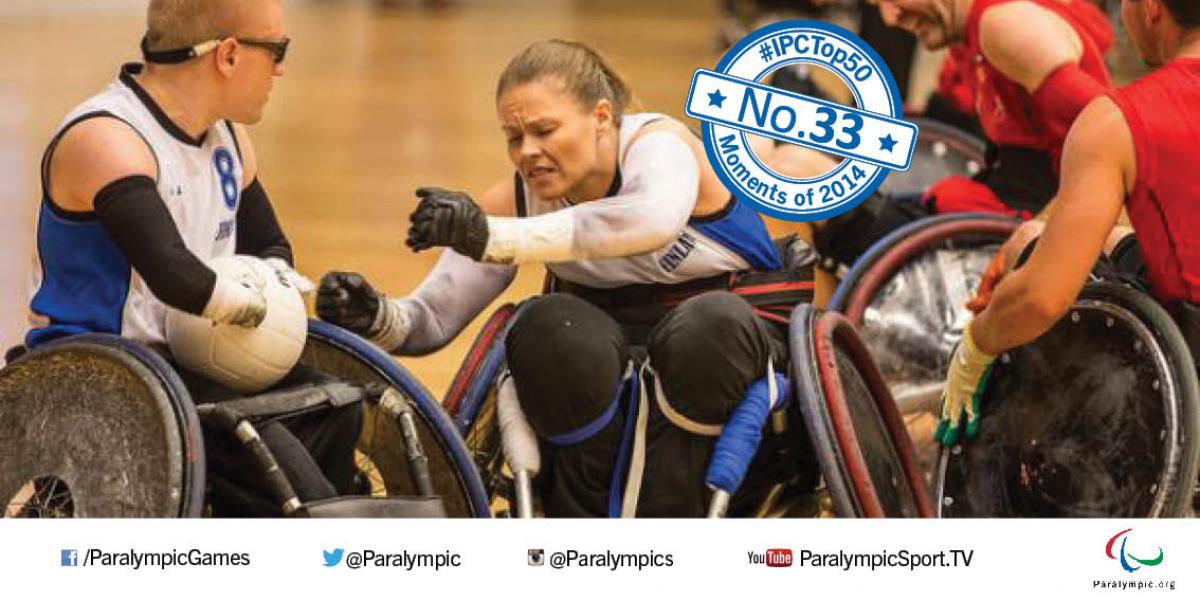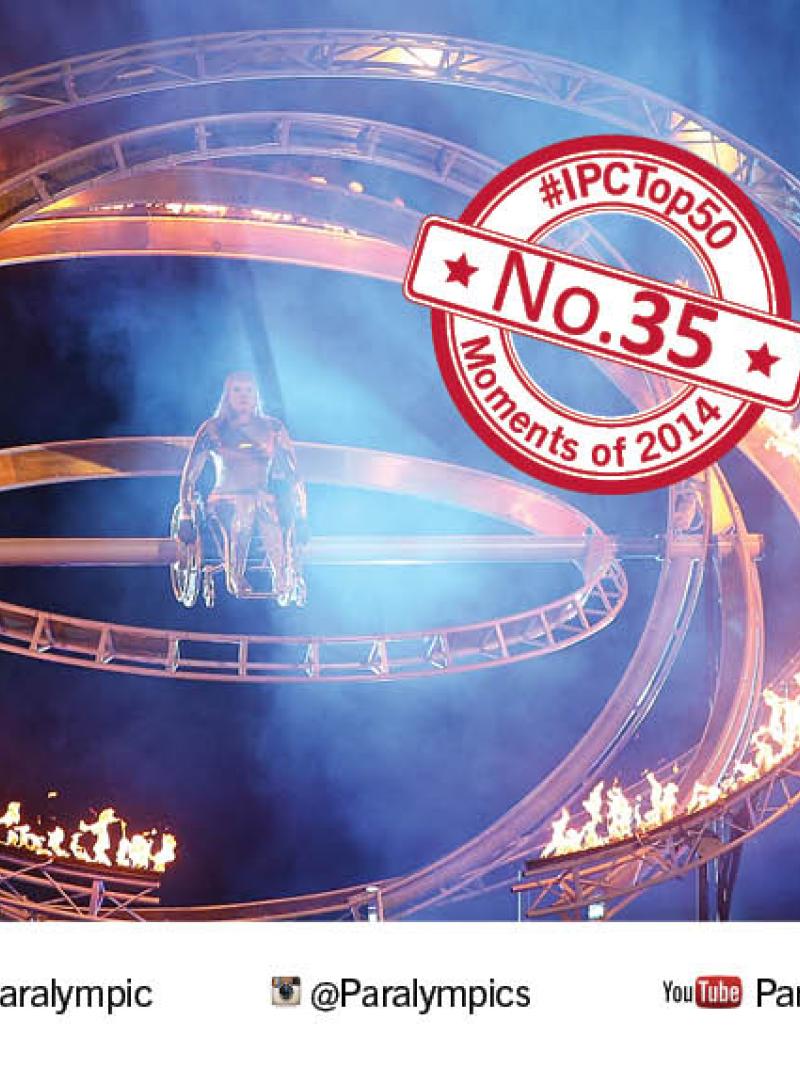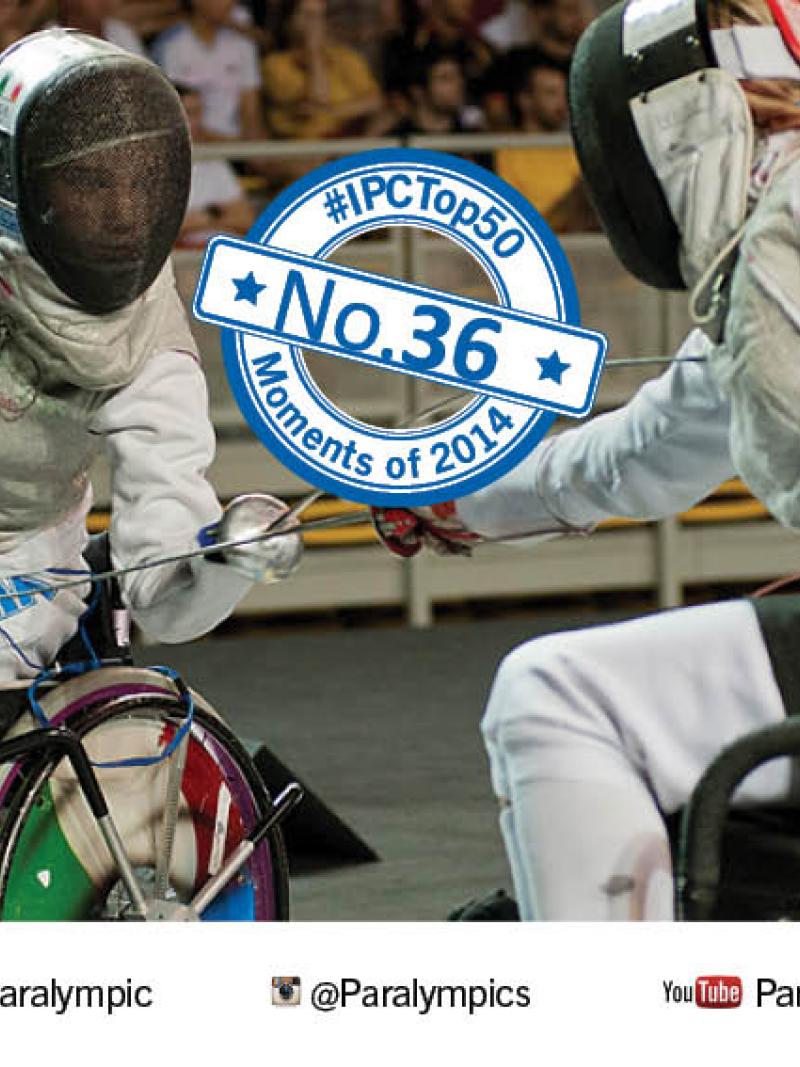No. 33 Mentoring drives female leadership and participation
The IPC’s No. 33 Moment of 2014 highlights how upskilling women is inspiring for the next generation of female athletes and leaders. 29 Nov 2014
Moment 33: Women on the rise
When you see women engage in the sport, you really see a transformation not only as a player, but as a person – as a more confident woman. That’s a beautiful thing
In 2014 there were some exciting new developments for women in para-sport. The International Paralympic Committee (IPC) launched a mentoring programme called WoMentoring, and traditionally male sports like wheelchair rugby and ice sledge hockey showcased female talent at the elite level.
These initiatives have been recognised in the IPC’s Top 50 Moments of 2014.
In order to progressively increase the number of women in leadership positions in the Paralympic Movement, the Agitos Foundation – the IPC’s development arm – launched WoMentoring in May 2014 with 16 mentees and 16 mentors. The project recognises the importance of gender diversity, for organisations to improve performance, access the widest talent pool, be more responsive to the market and achieve better corporate governance.
“There is now an extensive body of research which clearly shows that all organisations – including sports organisations - benefit significantly from balanced male and female representation at board and executive level,” said Helen Rowbotham, Director of Consulting at CSM Strategic, who is one of the mentors.
“However, despite awareness of this, it is still not being achieved. Women’s mentoring programmes won’t address this issue on their own, but they can be part of the solution.
“I hope that everyone would agree that any schemes which support the emergence of strong leaders within the Paralympic Movement can only be viewed as positive.”
Upskilling women
Rowbotham has been mentoring Suzie Dyrbus, who is responsible for the International Tennis Federation’s wheelchair tennis development programmes.
They meet informally after work to discuss challenges, issues and goals, and together wrote Dyrbus’s personal development plan which sets out clear objectives and key development areas for her career.
The process allowed Dyrbus to think more strategically about how to develop her skills, and learn from and network with women in senior positions.
“To have a programme that focuses on women is great because you just need to look at the world of sport – especially if you look at the higher up positions – let’s be honest – there are a lot fewer women out there than there are men,” said Dyrbus.
This issue, Drybus says, means that often women lack female role medals in top management positions, which is where mentoring comes in to fill that void.
“By focusing on women, you are really helping to upskill them in order to help more women come through to leadership positions.”
Not just making up the numbers
Dyrbus is sceptical about quota schemes, because she feels it is important for women to be valued on merit – not just to make up the numbers.
“Mentoring helps to ensure that the future female leaders have the right skills and knowledge.
“You don’t want a woman on the board who’s making up a number, you want someone who is there because they are equal to everyone else to ensure their opinion is valued as well.”
Having women in sport administration could also have an impact on female athlete participation.
“All of these things are connected to a certain degree,” said Rowbotham, “because it’s about women and girls seeing sport as being for them.
“You can only be what you can see.”
Leadership inspiring athletes
This could have been one of the factors involved in the recent success of female players in the British wheelchair rugby team, where the entire management team under Chief Executive David Pond is female.
“The sport in Great Britain is very open to women playing, and we are actively looking for women to come into our talent pathway,” said Lorraine Brown, Performance Director at Great Britain Wheelchair Rugby.
But she was keen to stress: “Paralympic sport has moved on. It’s very much about performance – not just about participating.
“Our selection policy is based on performance, not about making up the numbers.”
The sport has been mixed gender since the Beijing 2008 Paralympic Games. Originally the rules stated that 11 players were allowed per team, and if a 12th player was taken, it had to be a woman. But upon review, this rule was modified to ensure female players were taken on merit, instead of through positive discrimination.
Now, female players are classified in the same way as men, according to a points system, where the four players on court cannot exceed a total of eight points. But on the court female players are counted as 0.5 points less, effectively allowing coaches to have more functional players in action and compensating for the greater physiological strength of men.
“It’s worked really well for us,” said Brown, “because wheelchair rugby is like a game of chess. There’s a lot of strategy involved.
The strategy paid off with Britain’s Coral Batey selected by her peers as the best 1.5 player at the 2013 Canada Cup.
“She’s made an immediate impact worldwide – everyone’s really interested in what she can do on court. She just happens to be a woman,” said Brown.
Players mentoring players
Kevin Orr, Head Coach of the Canadian Wheelchair Rugby agrees with this sentiment: “The women that play wheelchair rugby have to have some of that swagger and confidence that regardless of what happens, they’re going to play the game.”
And as more female players get involved in the sport, it is also encouraging other women to play.
One of the provinces in Canada, Saskatchewan, has been a hotbed for female talent, where three out of 11 players on the provincial team are women.
“A lot of what happens in wheelchair rugby anyway is mentorship,” said Orr. “When you have a strong personality – or female – that’s going out recruiting, being a role model, that’s an opportunity to bring in others that aspire to be like them.”
Orr says the advantages for women far outweigh the perceived risks of athletes with significant impairments playing a high contact sport. Players gain independence and start taking up other opportunities like going to school, getting married and having children.
“When you see women engage in the sport, you really see a transformation not only as a player, but as a person – as a more confident woman. That’s a beautiful thing,” said Orr.
Visit the IPC’s Top 50 Moments of 2014 campaign page for more information






